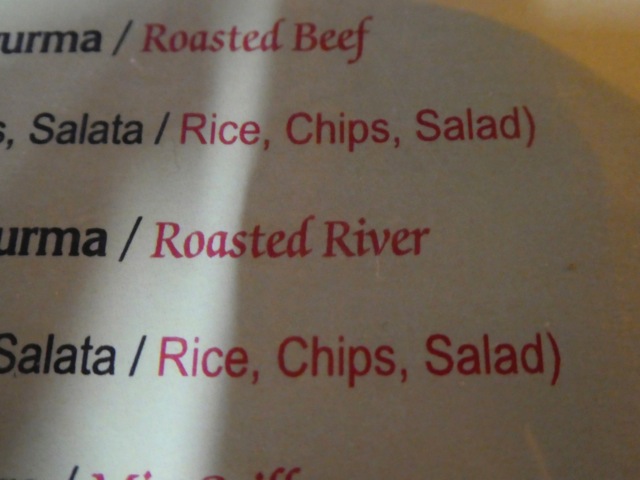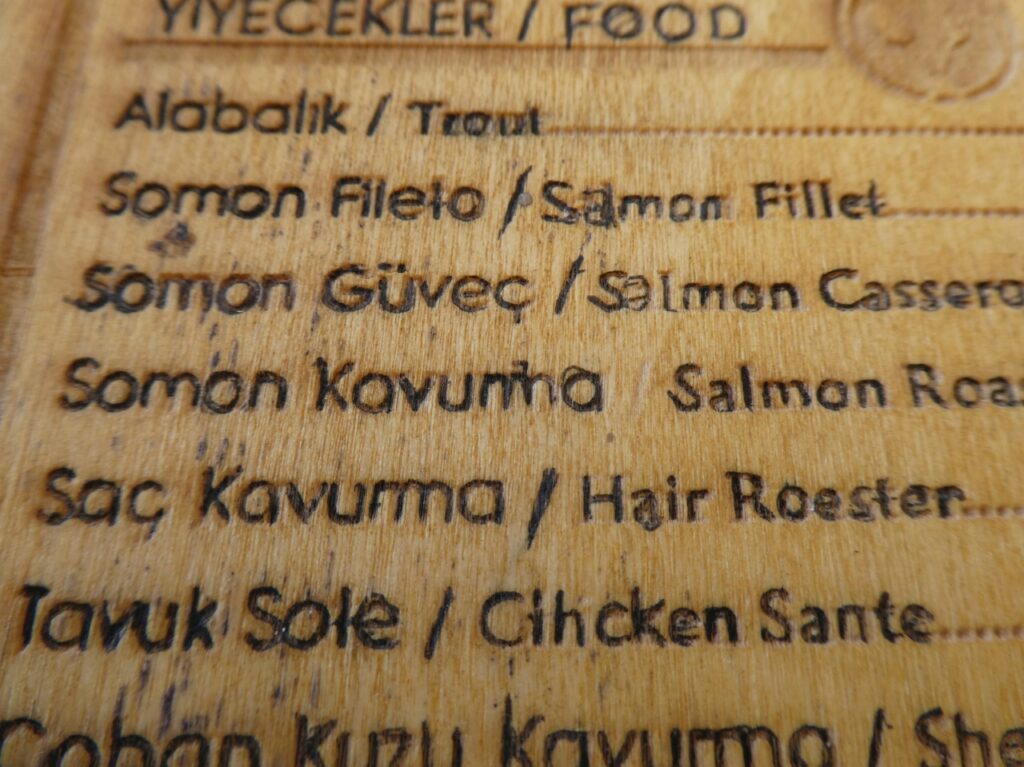
Linguistic Idiosyncrasies – Signs, Labels and Menus That Don’t Necessarily Help
Photographs by Mike Vickers
Feature photo above: Beloved brand Marks and Spencer’s illegitimate Turkish cousin.
Although Turkish is a venerable language, first appearing around the 11th century, its current form is surprisingly modern, only dating back to 1928, when Ataturk ordered the change from traditional Ottoman Turkish script to Roman letters. It’s not an easy language to learn, but at least now most of the letters are recognizable – I really feel sorry for my nephew who now lives in South Korea and is trying to learn a pictographic alphabet!
There are 29 letters in the Turkish alphabet, with no ‘q’, ‘w’ or ‘x’, so the Turkish for ‘X-ray’ is Röntgen, named after the pioneering German scientist who was rather surprised to be the first person to see his own bones while they were still intact and residing comfortably inside his body.
The written errors and idiosyncrasies between English and Turkish are frequent and often entertaining. I’d like to point out that I’m certainly not denigrating any Turk who has made the considerable effort to learn even a few words of English, a notoriously difficult language with hundreds of irregular verbs and a real struggle for many to successfully master. For example, try explaining sentences such as these:
‘Hold on, Captain Holder, you’re telling me that even though both holds were holed below the waterline by a wholly huge rock, half the hold still holds whole sole and the other half hold still holds whole haddock!’
‘Umm…’
‘Do you want me to repeat that?’
‘Yes please.’
Or one of my favourites, the head-scratching:
‘I thought it was tough drive from Loughborough to Slough, although the thoroughfare did pass through the thoroughly lovely borough of Woughton.’
Yeah, see what I mean!
I fear matters have continued to deteriorate now that smartphones are auto-correcting incorrectly on so many occasions. Actually, that’s not the problem, the problem is that people are either too lazy to check or too illiterate to recognize their mistakes. For instance, can anyone point out the errors in this advertisement: Wanted, labrador, for pushing wheel barrow and genital building duties. In addition, the proliferation of speed texting continues to make so many peeps dum thru losng unecs vowls frm xcesiv txtng!
My own Turkish remains, how can I put it – painfully rudimentary, and after many years experience here, I can still only manage a few simple sentences. On the other hand, Jan’s skills are far in advance of mine and her written Turkish is very good indeed. In my defence, linguistic incompetence does seem to run in our family. My sister, who lived here for a good few years, once ordered a baked estate agent for her dessert, confusing emlak with elma, the Turkish word for apple.
Technically, English is an Indo-European language with a common Latin root shared with Romanian, Spanish, Portuguese, French and Italian. Turkish, however, is an Altaic language from Eastern Asia, so there are almost no points of commonality. This can often result in raised eyebrows, quizzical smiles, a friendly shrug of the shoulders and an unspoken understanding that it’s unlikely you actually want to roast your shoes in garlic sauce. However, although the spelling may be wayward and the grammar a little stuttering, the intent of Turkish signs is almost always made clear – and that’s the most important thing, don’t you think?
With that in mind, here’s a few examples of some lovely linguistic hiccups, deceits, cross-overs and mysteries that I’ve seen over the years.




























